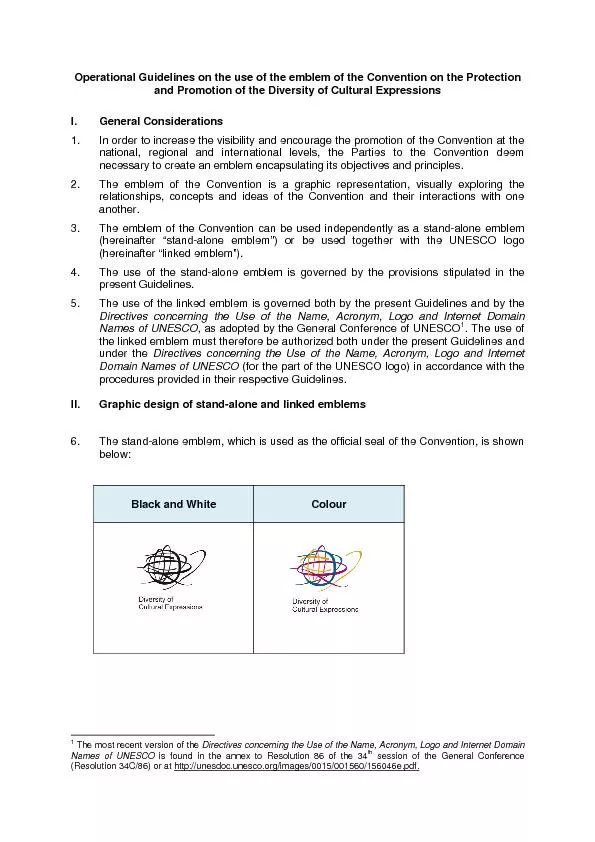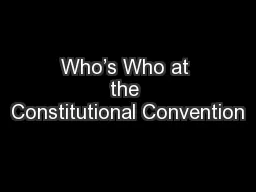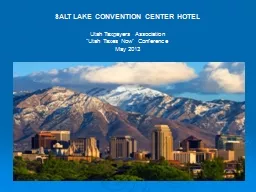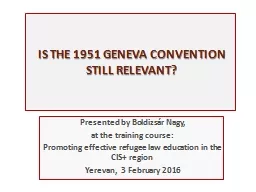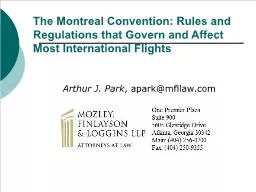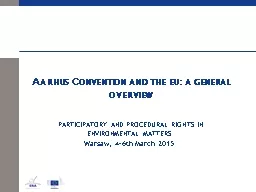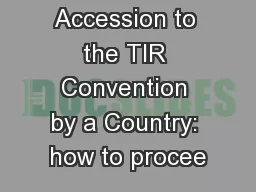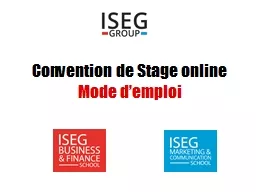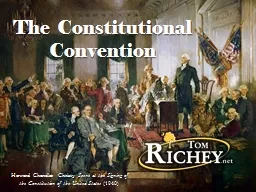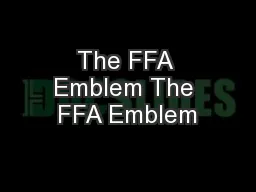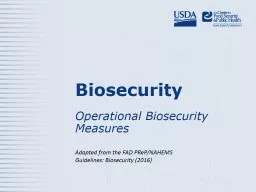PDF-Operational Guidelines on the use of the emblem of the Convention on t
Author : pasty-toler | Published Date : 2016-03-20
Black and White Colour The most recent version of the Directives concerning the Use of the Name Acronym Logo and Internet Domain Names of UNESCO The linked emblem
Presentation Embed Code
Download Presentation
Download Presentation The PPT/PDF document "Operational Guidelines on the use of the..." is the property of its rightful owner. Permission is granted to download and print the materials on this website for personal, non-commercial use only, and to display it on your personal computer provided you do not modify the materials and that you retain all copyright notices contained in the materials. By downloading content from our website, you accept the terms of this agreement.
Operational Guidelines on the use of the emblem of the Convention on t: Transcript
Black and White Colour The most recent version of the Directives concerning the Use of the Name Acronym Logo and Internet Domain Names of UNESCO The linked emblem is shown below Black and White Co. 2 The Preamble of the Convention shall be drafted in accordance with the constitutional procedure of both Contracting States MODEL CONVENTION 24 MODEL TAX CONVENTION CONDENSED VERSION 57513 OECD 2014 Chapter I SCOPE OF THE CONVENTION ARTICLE 1 PERSO The protective emblems. Don’t shoot!. . In armed conflict, this person, vehicle, site or equipment is providing neutral humanitarian aid.. Protect these emblems as they protect life.. . Why the red cross?. Is the road to the White House. You can help pave the way!. Texas is a state of diversity. Embrace, respect, and work with the differences.. Cooperation and learning are key to success.. No one group can do it alone!. Thomas Jefferson. ". That government is best which governs least". Samuel Adams. He declined to participate in the Constitutional Convention of 1787,. . . believing the Constitution . would give the national . . Utah Taxpayers Association. “Utah Taxes Now” Conference. May 2013. Existing Downtown Hotel Market. 11 full-service hotels (4,800 rooms). Existing hotels entered the market with little or no government help. Presented by Boldizsár Nagy,. at the training course:. Promoting effective refugee law education in the CIS+ region. Yerevan, 3 February 2016. EVIDENCE OF THE CONTINUED RELEVANCE OF THE GENEVA CONVENTION. Arthur J. Park. , apark@mfllaw.com . I. . Introduction. . The Montreal Convention governs international travel and limits the liability of carriers in the “international carriage of persons, baggage or cargo. eu. : . a . general. . overview. PARTICIPATORY AND PROCEDURAL RIGHTS IN ENVIRONMENTAL MATTERS . Warsaw, . 4. -. 6. th. . March. 2015. Content. Genesis and . historical. development. Functioning. Karachi, 18 August 2014. Nazife Bulut, TIR Insurance and Legal Affairs. A State willing to accede to the TIR Convention must: . Undertake the national legal procedure to be able to join an international Treaty. Mode d’emploi. Vous avez décroché un stage ? . BRAVO. !. Mais avant de commencer l’aventure, il vous faut votre . CONVENTION DE STAGE . !. Afin de faciliter vos démarches, l’ISEG Group vous permet de générer votre convention de stage directement. Howard Chandler . Christy, . Scene at the Signing of the Constitution of the United States . (1940). USHC 1.4. Analyze how dissatisfactions with the government under the Articles of Confederation were addressed with the writing of the Constitution of 1787, including the debates and compromises reached at the Philadelphia Convention and the ratification of the Constitution. . History. The History of the FFA emblem . goes back to 1926, when Henry . Groseclose. was working on the Future Farmers of Virginia constitution and bylaws.. He was inspired by drawings of an owl perched on a spade that he found in materials from a Danish agriculture organization.. Adapted from the FAD PReP/NAHEMS . Guidelines: Biosecurity (2016). Describes operational biosecurity. Presents considerations to develop an effective biosecurity plan. Provides examples of operational measures. La gamme de thé MORPHEE vise toute générations recherchant le sommeil paisible tant désiré et non procuré par tout types de médicaments. Essentiellement composé de feuille de morphine, ce thé vous assurera d’un rétablissement digne d’un voyage sur .
Download Document
Here is the link to download the presentation.
"Operational Guidelines on the use of the emblem of the Convention on t"The content belongs to its owner. You may download and print it for personal use, without modification, and keep all copyright notices. By downloading, you agree to these terms.
Related Documents

